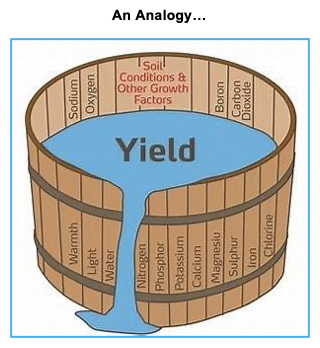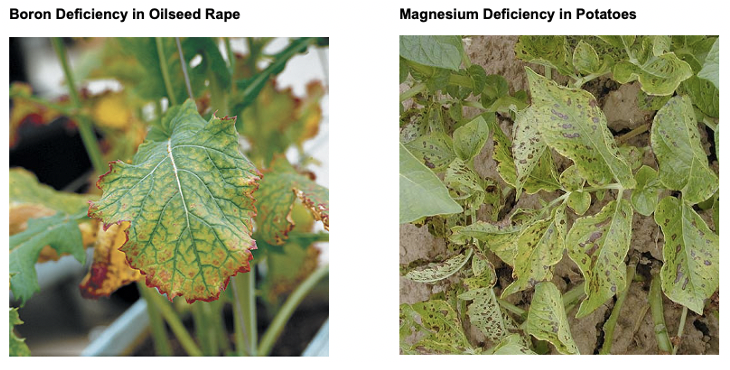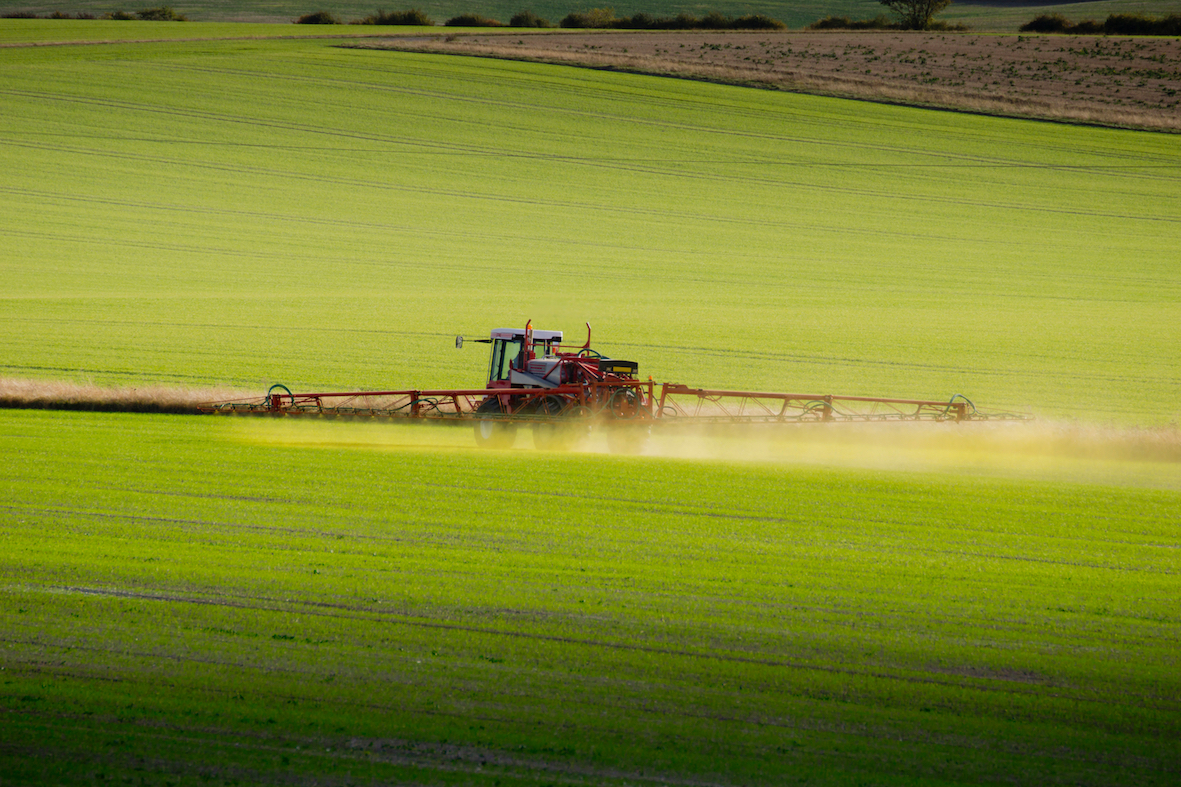
In the previous report, we discussed the importance of choosing the right synthetic fertilizer, especially for the source of nitrogen in a context of both Sustainable and Sustainable Intensive Agriculture (SA and SIA) and Greenhouse Gas Emissions (GHG).
We put this in a framework of the first ‘R’ of four: the Right Fertilizer. We’re now going to concentrate on the second of the four Rs: the Right Application Rate.
Arable Crops
Although the choice of fertilizer and the correct application rate are relevant for all crops, we’re going to focus on arable crops in this report, excluding rice.
For our purpose, we’ll define arable as major crops that are in some way tilled or planted. This includes cereals, oilseeds, pulses, cotton, potatoes and sugar beet. Rice has its own set own needs and will be considered separately.
According to our definition, plantation crops, such as coffee or palm oil, grassland (even if grass is used for hay or silage), horticultural crops and novel crops all need to be considered separately, although there’s some crossover of principles.
Nutrient Balance
Although we’ve identified nitrogen production and its use as the main source of farm greenhouse gas (GHG) and other undesirable emissions, other macronutrients such as Phosphorous (P), Potash (K) and Sulphur (S) also have a minor part to play in GHG emissions. More importantly, both macronutrients and micronutrients have important support roles to nitrogen in maintaining a healthy crop.
Agronomists have long known, for example, that if the balance between nitrogen and sulphur is not correct, the required amino acids from the sulphur to assist protein, production and growth from the nitrogen is inefficient. The ratio is generally considered to be about 3:1 nitrogen to sulphur. This doesn’t necessarily mean we must apply that ratio, because Sulphur is also available to the plant from foliar (leaf) uptake from emissions of air pollutants, acid rain, and from soil sinks (as sulphates) in a process called ‘assimilation’.
This is our first example of Right Application Rate, because a blue-sky prairie crop of wheat is going to have a very different sulphur need to one grown near a polluted urban area. It also means that if undesirable acid rain in the future is hopefully reduced by improved atmospheric pollution control, adjustments will have to be made. Similar relationships exist for other nutrients, such as P and K, although these are slightly different because differing soils contain different levels of these nutrients.
There are two important concepts here. The first relates to limitations to yield based on the ‘weakest link in the chain’. Liebig’s Law of the Minimum (1840), also called ‘Liebig’s Barrel’, states that growth is dictated not by the total resources available but by the scarcest resource (the limiting factor). In the analogy below, the loss of water in the bucket is loss of yield.

This analogy is particularly valuable for micronutrients. In the pictures below, the nitrogen cannot be used by the plant because of micronutrient deficiencies.

Although these nutrient deficiencies can often be corrected by foliar applications, in many cases, damage to the root or restrictions on the plant to photosynthesis has already been done and the plant can also become vulnerable to attack from pests.
A second useful concept is that of balanced nutrition. In 2018, the fertilizer company, Yara, produced a study on Winter Wheat, which considered macronutrients and one micronutrient: Magnesium (Mg).

Using Liebig’s terminology, given a Theoretical Best Performance (TBP) of 85% nitrogen usage (15% nitrogen lost and not available to the plant), in this scenario the approximate Limiting Factor (LF) of potassium (K) is causing a 6% yield loss (63%-57%) and similar calculations can be made for Mg and S. This LF figure is approximate because there are also intra nutrient reactions. Particularly important is the strong interaction between N, because with depleted (exchangeable) K, the plant is unable to use the nitrogen and it is wasted and causes larger GHG emissions.
Available Nutrients
In the Balanced Nutrition case study, it was likely that most of the nutrients were available for use by the plant. The needs of the plant are best established by a soil test for macronutrients and Magnesium (other micronutrients tend to be more costly). These are normally carried out in a laboratory after samples are drawn in the field, and this is also important so as not to waste nutrients.
In some cases, and on some soils, no P and K will be required. For example, the British DEFRA has a six-point scale and, for arable crops, recommends no P or K at the highest levels (3-5 on the index) and that sampling should be done every three to five years. Soil tests will also provide the acidity (pH) of the soil, although simple and cheap in-field testing kits are also available for this. pH Testing is critical as, at different levels, plant nutrient availability changes.

The normal corrective action for soil acidity is the application of lime or other similar alkaline materials.
Soil alkalinity/salinity (caused by excessive sodium carbonate, man induced or natural) is much harder to correct as water infiltration is inhibited and, when dry, cultivation is difficult because of hardness and cracking. Crops that can withstand water logging can be grown, often with reduced yields, and rice is the most important arable crop with this capability.
This is another example of where SA/SIA is scalable as it is easy for large farms in the developed world to access these soil analysis services. But what about the 80% of farmers globally on smallholdings in the underdeveloped world?
Over the last 20 years, a great deal of effort has gone into devising simple in-field soil testing kits for the underdeveloped world. In many cases, the work is done by a local fertilizer or agrochemical merchant with an agronomist or agricultural extension agent to hand. There are many cases where even the latter may not have sufficient education to calculate the correct recommendations from the results, but technology is increasingly helping by allowing a mobile phone upload of field sample results to a central website to calculate and return the recommendations to the agent.
Crop Rotation
Where used, and in particular for SA/SIA where, for example, on some soils continuous single crop no-till/min-till systems aren’t practical, crop rotation of nitrogen fixing pulses and legumes is an alternative way to adjust nitrogen applications downwards in the following crop.
No better example of this is the American farmer talking to his neighbour about how much corn (maize) and how many beans (soybeans) to grow next year. They even have a nickname, ‘cob rollers’, because they discuss the weighty issues of the day, such as this, while rolling a corn cob under their feet to show they are discussing an important matter.
A crop of corn following soybean will need a highly desirable 30-40% less nitrogen but after that there is enough to discuss on the remaining economics to last all day. Each farm is different.
Conclusion
We waste so much fertilizer globally, particularly nitrogen, by not using the Right Application Rate.

Other Opinions You Might Be Interested In…
